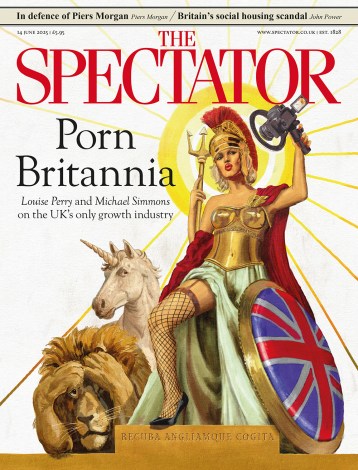The secretly-filmed footage is a horror show. Hens are desperately trying to escape as they suffocate in a gas chamber. The birds, which are being killed for supermarket meat because they’re past their egg-laying days, gasp for breath. They appear to cry out as they die slowly. The floor of the gas chamber is littered with dead bodies.
The RSPCA increasingly feels like a relic that has lost its way
Should we phone the RSPCA? Oh, someone already did. The animal welfare charity’s response? While it acknowledged that the footage was deeply upsetting, it said that using carbon dioxide to gas chickens was permitted under RSPCA welfare standards:
‘This can be incredibly difficult to watch but the birds are actually unconscious when this happens, and are not experiencing pain.’
Really? The RSPCA’s ‘Assured Scheme’, which certifies farms, food producers and food retailers that meet its specific animal welfare standards, does indeed allow hens to be killed in either gas chambers or electric water baths. Its website tells us:
‘The RSPCA welfare standards require birds to be killed within 10 seconds of exit from the water bath. The RSPCA is committed to phasing out inverted shackling systems, and these are currently only allowed under strict conditions of use.’
Is this meant to be reassuring for animal lovers? The anti-cruelty charity also approves slaughter by gas or maceration of day-old chicks, describing this as an ‘effective and humane kill’.
Pigs can be painfully mutilated on RSCPA-approved farms, with tail docking and teeth clipping both allowed in certain cases. The charity also allows pigs to be slaughtered in gas chambers. In RSPCA Assured slaughterhouses, ‘the concentration (of Carbon Dioxide) must be at least 90 per cent,’the charity informs us. Crumbs of comfort for those poor animals in their final moments.
An investigation published in the Independent claimed that pigs who meet their end in this way have been known to ‘scream in pain and gasp for breath’ and ‘scramble to try to escape, panicking and in distress’.
Turkeys don’t fare much better: they can have their beaks painfully trimmed on RSCPA-backed farms. But the better news for the birds is that, when they go to the slaughterhouse, the charity says they shouldn’t be picked up by only one leg. They might be too tired and distressed to care by that point, because the guidelines allow cramped journeys of up to several hours between farm and slaughterhouse before they die.
It doesn’t look like these pathetic guidelines are always observed anyway. Campaign group Animal Rising claimed to have found ‘systemic animal cruelty’ at a number of RSCPA-approved abattoirs. Its investigators discovered last year that in one slaughterhouse 85 per cent of pigs were stunned incorrectly, leaving animals conscious during slaughter; in another, 96 per cent of cows were prodded with an electric goad, a practice banned by the RSPCA. Some 46 per cent of cows showed clear signs of panic or escape behaviours, it added.
There was also ‘frequent verbal and physical abuse from workers’, said the campaigners. Animals ‘watch(ed) in terror and panic as other animals were killed or stunned in front of them’. The society suspended the abattoirs and launched an investigation, insisting that it takes allegations of poor animal welfare ‘incredibly seriously’.
But the wildlife TV presenter Chris Packham and former Green Party MP Caroline Lucas had enough; they quit as president and vice-president of the RSPCA after the findings. Queen guitarist Sir Brian May has also stepped down, after what he called ‘damning evidence’ of animal welfare failings related to its food certification label. The RSPCA said it had ‘different views from Brian on how best to approach this complex challenge’.
When animal rights campaigners released an advert to expose the awful truth about dairy farming, the RSPCA’s head of public affairs, David Bowles, accused activists of using ’emotive’ language. Bowles once took to Twitter to say that ‘seal shooting is not culling it’s about humane pest control’. This animal lover disagrees.
What is the purpose of an animal welfare charity that behaves like this? What is the RSPCA doing with the tens of millions of pounds that the public donates to it each year?
The charity does do good work for animals. In 2022 alone, it put 29,945 pets in loving new homes, for instance. They also say their helpline receives 90,000 calls each month. When they can, they do go out and help animals in need. This is what people love about them. But other animal charities do equally admirable work on that front and the RSPCA increasingly feels like a relic that has lost its way.
With the RSPCA, its mission is spelled out in its name: the Royal Society for the Prevention of Cruelty to Animals. It’s meant to prevent cruelty to animals. But, when animals need it most, the RSPCA is too often looking the other way; or, in the case of those poor hens, actively sweeping animal suffering under the carpet.







Comments